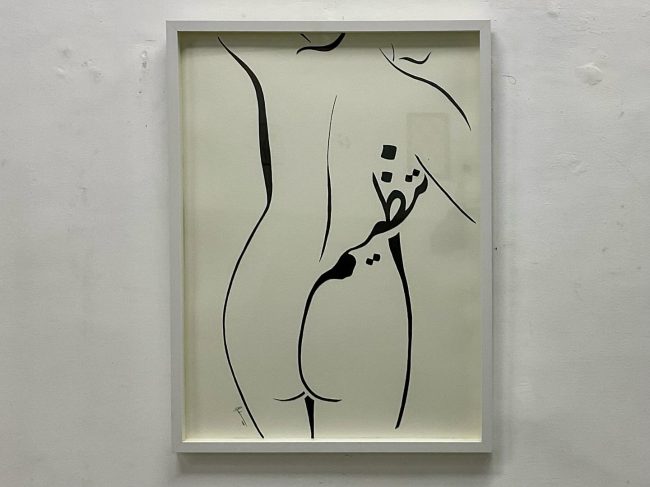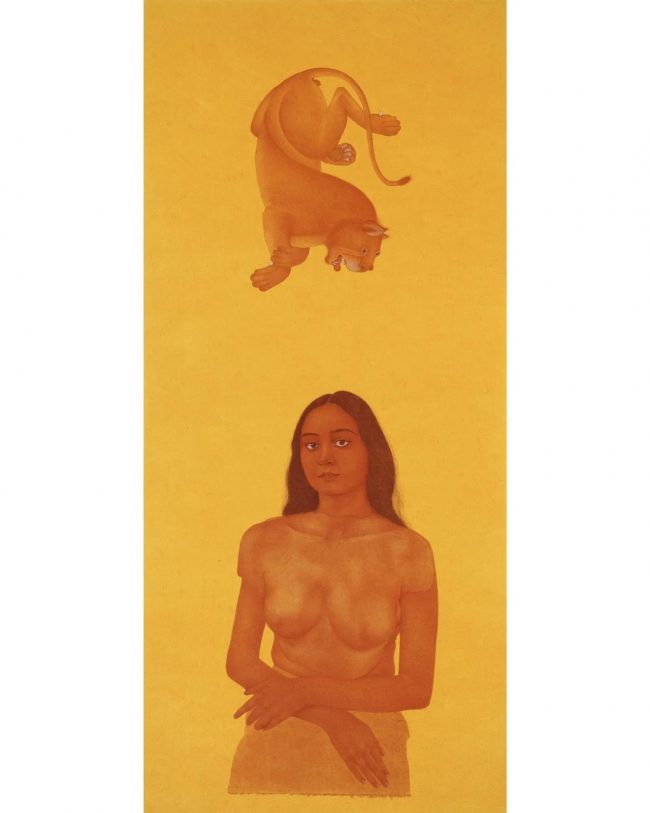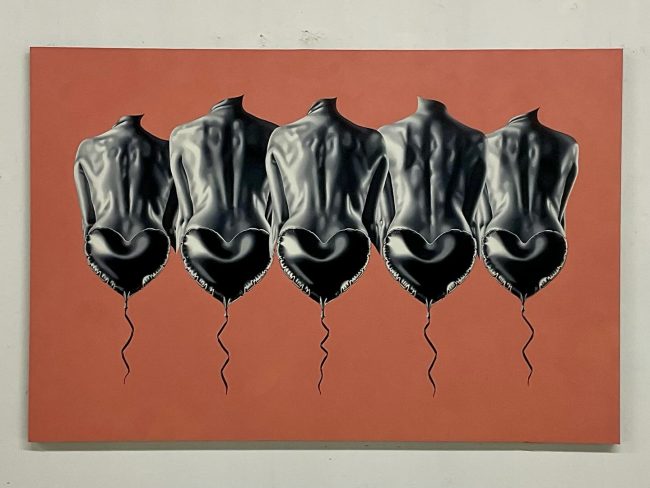As surely as the arc of chronology gives birth to an Aquarian Anthropocene Age, the depiction of human flesh in its many peddled forms reflects t
As surely as the arc of chronology gives birth to an Aquarian Anthropocene Age, the depiction of human flesh in its many peddled forms reflects this unassumingly quiet spiritual revolution. The significance of this astrological morphing is felt keenly by those with the gift of oracular divination, none more so than within the tangible musings of artists working with the imagery of the human vessel. On recent display in Sanat Initiative’s Karachi space, from 19th to 28th December 2023, the works of the trio Misha Japanwala, Muhammad Zeeshan and Scheherazade Junejo, serendipitously reflected the liminal cultural shift between the old paradigm and the new. The title of the exhibition , ‘Nyx’, is the name of the Greek goddess personifying the fecund chthonic night, and is a metaphor for the foetal stage before the birthing of a future universe where the material physicality of the body merges with the divine spirit, abolishing polarities which stigmatise and create imbalance in the name of greed and power.
Misha Japanwala’s star rose exponentially for her heroically brazen and unabashed, detailed casts and body plates of breasts. Unsurprisingly, the artist received vehement criticism from all corners of the world, and walks of life, on her choice to de-radicalise heavily policed sites of discord – female and trans-gendered bodies. Japanwala’s relationship to shame rapidly evolved past the point of its lexical anatomy, to a Psychonaut’s journey to the Omphalos of desire, commodification, victimhood, control and above all, perception. In her two-dimensional works from ‘Nyx’, such as ‘Jaahil’ (Ink on Paper, 14 x 11 Inches, 2023), a grace and lyricism of line-quality in a monochromatic palette render words through the anatomy of female flesh. The calligraphic curves accentuate and simultaneously form the breasts of this headless figure. Her three-dimensional series, collectively titled ‘Beghairat Congregation’, asymmetrically arranged groupings of resin and metal coated, disembodied breasts, are simultaneously fragile and imposing. Each ‘breast’ imitates the natural textured puckering of an animated being, testament to the artist’s honed skill in the arduous process of casting the delicacy of skin. Much like the breasts of Michelangelo’s virago Sibyls in the Sistine Chapel, upon which the Master sculptor and draughtsman projected androgyny, Japanwala divorces the sexuality from the body part, creating the opportunity for a purely aesthetic dialogue with the viewer. In most art, monumentality or abstraction impersonalises and therefore, it may be argued, masculinises women, which was certainly the case in the Western Canon’s Mannerist movement. The impersonalisation in Japanwala’s breasts however, leans towards stripping bare all semblance of vulnerability – any allusion to sin, guilt, or lust obliterated.
In a similar ode to de-mystification, Japanwala and Muhammad Zeeshan’s visual dialogue resulted in the latter incorporating the famous image of Japanwala donning her breast plate. ‘deMONSTERate’ – I (Series, Acrylic on Canvas, 48 x 22 Inches, 2023), depicts a stylised female lion rendered in the flat planes of traditional Indo-Persian miniature painting, perched in mid-air vertically above Japanwala’s image. Zeeshan has sensitively painted Japanwala in warm tones of umber, sepia and mustard, and she gazes out of the frame in a mildly quizzical manner, confidently holding accountable any who dare to objectify her nudity. It is certainly not lost on the viewer, that a male artist corroborating the position of strength in vulnerability that is the prerogative of the female artist, creates an opportunity for an alliance between the sexes. The bestiality of subjugation, alive in the relationship between animal and human, woman and man, servant and master – indeed, any schema of authoritarianism rooted in the desire to consume and control – results in a socio-cultural pendulum swing where harmony is achieved through uprooting of convention. Zeeshan’s ‘Tasveer – IV (Edition of 3 Plus 1 Artist’s Print (Each Print), Acrylic and UV Print on Canvas, 20 x 16 Inches Each), reflects this dilemma of shifting hierarchies, with the disembodied lower half of a horse patterned repetitively and overlayed across the beaming visage of a young girl.
Scheherezade Junejo, on the other hand, takes a much bolder approach to addressing the desire to lay claim to others. Perhaps her most arresting piece out of this collection is ‘Eye Candy’ (Oil on Canvas, 48 x 36 Inches, 2023), a collage of arresting kitsch, pop and Humanist realism which leaves nothing to the imagination. The ripple and torsion of muscle and bone is visible in the bare torso while all vestiges of identity vanish through the grotesque-noir of an animal skull in place of personification.
Eluding to the fraught nature of the relationship between the sexes, in an age where honour killings, domestic violence and the brutality of rape make their way through the Subcontinental news-cycle, the subtler horror of trophied objectification of women is often considered par for the course. The expectation to submit in transactional unspoken contracts becomes an imaginarium of shattered dreams. Junejo’s saturated colours, sharp line quality, and use of the candied heart motif become the saccharine layers over this harsh reality of psychological imprisonment.
When the personal agency of an embodied being is rendered obsolete by the society which raises, nurtures, and subsequently polishes it, it behooves the collective to reflect on the value placed on that very body by societal tropes. Corruption of the inherent divinity within each physical vessel, has resulted in an amnesia en-masse of propriety and regard for the other human entrusted within any relationship. Through their exploration of nudity as a vehicle for communal awakening, these courageous artists quench a thirst for cleansing of the taboos and agendas associated with fear of the sensual, for it is in the embodiment of the material that the seeds of the soul are to be found.




COMMENTS